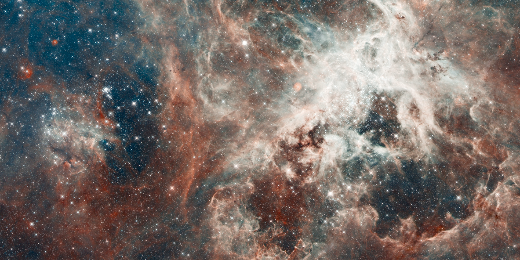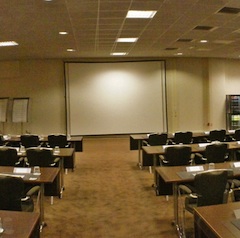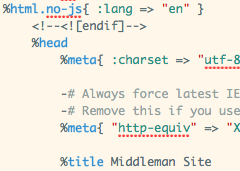About
I am an Associate Professor at Texas A&M in the English Department. My current research project is a media archaeology of computer bugs. My first book focuses on the rhetoric of transhumanism. I am broadly interested in rhetorical constructions of fate and human destiny in response to the radical technological changes of the digital. My research and pedagogical work touches on facets of digital rhetoric, digital humanities, emerging media, and technical communications.
Transhumanism

Published Book
My first book project (published by University of Minnesota Press, Fall 2017) explores the rhetoric of the transhumanism movement with regards specifically to its Utopian content. Order Transhumanism on Amazon!
Transhumanism: Evolutionary Futurism and the Human Technologies of Utopia
Order Transhumanism on Amazon!
This project develops the rhetorical mode of “evolutionary futurism” and the rhetoric of the transhumanist movement. While transhumanism is usually dismissed by scholars of rhetoric, technology, and culture as a fringe movement with limited scope, my project instead argues that “transhumanism” is a name for a much more pervasive rhetorical mode that considers technology as a vector for evolutionary change operating on society, consciousness, and biology. I call this rhetorical mode “evolutionary futurism,” and, in tracing this formation throughout 20th and 21st century culture, I suggest that transhumanism, rather than a fringe movement of renegade scientists and philosophers, is actually a postmodern form of Utopia in line with Fredric Jameson’s discussion of the concept in Postmodernism.
My book then traces the rhetorical, Utopian mode I call “evolutionary futurism” through a number of important moments in the 20th and 21st centuries.
Chapters Summaries
- The first chapter considers the origin of evolutionary futurism in continental modernism. Specifically, the chapter traces out the reception of Nietzsche’s übermensch as a figure for radical evolution rather than enlightened self-interest. Theosophist P.D. Ouspensky and Futurist Mina Loy are considered as guides for this particular uptake of Nietzsche.
- The second chapter explores evolutionary futurist rhetoric in pre-WWII American science fiction during the “superman boom,” my term for the period immediately before and during the start of the war in which John W. Campbell solicited a considerable mass of stories about genetically evolved superhumans for his magazines. Concomitant to this publishing fad, SF fan culture also became intersted in actualizing this evolutionary futurist in its calls for an evolved “fannationalism.”
- The third chapter is about the role of suffering and hedonism in an evolutionary futurism. Questioning the dominant transhuman rhetorical mode in which evolving beyond the human will be blissful, I explore the thinking of Teilhard de Chardin, the Jesuit who first coined the term “transhuman” in its modern usage, as a model for an evolutionary vanguard not tied to dubious notions of winner-take-all evolution.
- The fourth chapter asks after aesthetics and evolutionary futurism. In the realm of high art, I consider the impact of Natasha Vita-More’s manifesto for transhuman art and the work of Arakawa and Gins, who adopt principles of evolutionary futurist rhetoric to art and architecture. I juxtapose this aesthetic with the “transhuman inaesthetic,” my term for the often bland and beige futurism of transhumanists such as Raymond Kurzweil and Zoltan Istvan. Finally, I conclude by arguing that this inaesthetic blinds many transhumanists to the evolutionary futurist aspects of online “low art” movements, such as meme culture.
- The book concludes by discussing accelerationism and xenofeminism as recent examples of imagining an evolutionary futurist vanguard politics.
CV
View my CV.
Andrew Pilsch
Associate Professor of English
Department of English
Texas A&M University
Professional Experience
| Associate Department Head | Texas A&M University | 2023-Present |
| Associate Professor | Texas A&M University | 2018-Present |
| Assistant Professor | Texas A&M University | 2015-2018 |
| Assistant Professor | Arizona State University | 2012-2015 |
| Fixed-Term Lecturer | Pennsylvania State University | 2011-2012 |
| Graduate Teaching Fellow | Pennsylvania State University | 2005-2011 |
Education
| PhD, English | Pennsylvania State University | May 2011 |
- Dissertation: Transhumanism: Evolutionary Logic, Rhetoric, and the Future
- Committee: Richard Doyle (Director), Jeffrey Nealon, Mark Morrisson, Robert Yarber.
| MA, English | Pennsylvania State University | May 2007 |
| BS, Computer Science | Georgia Institute of Technology | May 2005 |
| BS, Science Technology & Culture | Georgia Institute of Technology | May 2005 |
Current Book Projects
The Radical 90s: Recontextualizing the Informatics of Domination, 1985-2001
Six-Chapter Manuscript, In-Progress – This project re-examines the period of Utopian optimism during the 1990s and the early days of Internet Culture. Using contemporary perspectives from infrastructure studies, critical AI, and feminist new materialism and contemporary re-evaluations of cyberpunk and the legacy of Donna Haraway’s cyborg, the book contends that particularly narrow and technical unsophisticated narratives of cyberculture, written by the participants in what felt like a revolution, still largely structure critical conversations about digital life, even as these digital spaces slide more and more visibly toward what Donna Haraway labelled as “the informatics of domination” in 1985. The project also engages with recent desire to restore the liberatory aspects of early Internet culture and asks after how we might better think about digital networks outside of a binary of freedom and oppression.
Publications
Books
Humans at Work in the Digital Age: Forms of Digital Textual Labor
14-Chapter Edited Collection, Co-Edited with Shawna Ross, Routledge (2019) – This edited collection explores the roots of twenty-first century cultures of digital textual labor, mapping the diverse physical and cognitive acts involved, and recovering the invisible workers and work that support digital technologies. Table of Contents Online at Routledge
Transhumanism: Evolutionary Futurism and the Human Technologies of Utopia
Six-Chapter Manuscript, University of Minnesota (2017) – This book explores the rhetorical history of “evolutionary futurism,” a twentieth century Utopian rhetorical mode associating advancing telecommunications technologies with biological evolution to suggest near-future radical shifts in human existence and cognition. Tracing this rhetoric of transhumanism, chapters explore the evolutionary futurism of theosophy, 1940s science fiction, Raymond Kurzweil, and Pierre Teilhard de Chardin. In addition to a theoretical introduction, the book also contains an extended discussion of contemporary digital aesthetics as transhuman vectors of evolutionary overcoming.
Prizes: 2017 Science Fiction and Technoculture Studies Book Prize
Reviews: Modernism/Modernity (25.1), Configurations (26.4), Contemporary Political Theory, Science Fiction Studies (46.1)
Articles & Chapters
“Teaching Science Fiction as Media Archaeology” in Science Fiction in the Literature Classroom. Ed. Gerry Canavan. (collection accepted by MLA).
“Locating the minimal in minimal computing pedagogy: minimal computing tools and the classroom management of student composing workflows.” Learning, Media, and Technology (Published 2024, Issue Number Forthcoming)
“Digital Labor” Chapter in Bloomsbury Handbook to the Digital Humanities. Co-authored (40%) w/ Shawna Ross. Ed. James O’Sullivan. (Bloomsbury, 2023).
“What the Computer Said: Poetic Machines, Rhetorical Adjuncts, and the Circuits of Eloquence” in Re-Programmable Rhetorics. Eds. Steven Holmes and Michael Faris. (Utah State UP, 2022).
“Computation.” Chapter in The Edinburgh Companion to Modernism and Technology. Eds. Ian Whittington and Alex Goody. (Edinburgh UP, 2022).
“Writing.” Chapter in Understanding Flusser, Understanding Modernism. Ed. Aaron Jaffe, Michael F. Miller, Rodrigo Martini. (Bloomsbury, 2021).
“The Posthuman City.” Chapter in The City in American Literature and Culture. Ed. Kevin McNamara. (Cambridge UP, 2021).
“Events in Flux: Software Architecture, Detractio, and the Rhetorical Infrastructure of Facebook.” Special Issue, “Composing Algorithms: Writing (with) Rhetorical Machines,” of Computers & Composition 57 (2020): n.p..
“Polynesian Paralysis: Tiki Culture and the Aesthetics of American Empire.” Chapter in The Shaken and the Stirred: The Year’s Work in Cocktail Culture. Eds. Stephen Schneider and Craig N. Owens. (Indiana UP, 2020).
“Life During Wartime: Science Fiction during and after World War II.” Chapter in The Cambridge History of Science Fiction eds. Gerry Canavan and Eric Carl Link. (Cambridge UP, 2018).
“The Ethos of Mr. Robot.” Present Tense 7.1 (2018): n.p.
“Translating the Future: Transpilers and the Implementation of JavaScript’s Future.” Amodern 8 (“Translation-Machination” special issue, ed. Christine Mitchell & Rita Raley) (2018): n.p.
“Invoking Darkness: Skotison, Scalar Derangement, and Inhuman Rhetoric.” Philosophy and Rhetoric 50.3 (2017): 336-355.
“‘We twiddle…and turn into machines’: Mina Loy, HTML, and the Machining of Information.” Chapter in Reading Modernism with Machines eds. Shawna Ross & James O’Sullivan (Palgrave, 2016).
“Insect Capital.” New American Notes Online (NANO) 8 (2015).
“Self-Help Supermen: The Politics of Fan Utopias in World War II-Era Science Fiction.” Science Fiction Studies 41.3 (2014): 524-542.
Reviews
“Review of Technosystems by Andrew Feenberg”. Contemporary Political Theory (2017).
“Ethical Models for Nonhuman, Collective Rhetoric: A Review of Against Purity: Living Ethically in Compromised Times by Alexis Shotwell and Minimal Ethics for the Anthropocene by Joanna Zylinska”. Enculturation (2017).
“After ‘The’ ‘Text’: A Review of Comparative Textual Media.” Review of Comparative Textual Media edited by N. Katherine Hayles and Jessica Pressman. Enculturation (2016).
“Review of MP3: The Meaning of a Format by Jonathan Sterne.” Information Society 29.5 (2013): 316-317.
“Review of Slime Dynamics by Ben Woodard.” Itineration, 2013.
- Review uses an exploratory hypertext framework to rethink the possibilities of the book review.
“A Review of The Breakup 2.0 by Illana Gershon.” Information Society 28.2 (2012): 126-127.
“Contagious Narratives: Towards a Global Epidemiology in Priscilla Wald’s Contagious.” Review Of Contagious: Cultures, Carriers, and the Outbreak Narrative by Priscilla Wald. BioSocieties 4.2-3 (2009): 326-328.
Non-Peer-Reviewed
“What Does Flash Reason Look Like.” Textshop Experiments 5 (2018): n.p.
- Experimental computer poetry based on the work of Gregory L. Ulmer.
“When the Coffee Machine Is Just a Human.” An Object Lesson for The Atlantic (January 28, 2016).
Online Editions & Open Source Software
Online Editions
Mina Loy Online. A collection of poems and manifestoes by avant-garde modernist Mina Loy, posted online in an open-access, typographically correct format. http://oncomouse.github.io/loy.
Open Source Software
coc-bibtex, Lead developer. Open-source bibliography extension for the popular Vim editor that reads BibLaTeX files, such as those produced by Zotero, and auto-generates in-text citations for users editing LaTeX and Markdown documents. See usage statistics
coc-fish, Lead Developer. Plugin for the popular Vim editor and Coc framework that adds autocompletion for the Fish shell. See usage statistics
rake-and-pandoc, Lead Developer. Framework for writing books using the open source Markdown engine, Pandoc, and the task automation system, Rake.
jquery-inline-footnotes, Lead Developer. Open source plugin for the industry-standard Javascript framework, jQuery that converts footnotes generated by Markdown into responsive, elegant side notes.
The Goldilocks Approach SASS, Lead Developer. Open source port of The Goldilocks Approach (a CSS responsive design framework) to SASS (a CSS preprocessor used throughout the web development industry).
Grants & Awards
Grants
Co-author. “Toward a Digital Henry James.” With Shawna Ross, College of Letters & Science at ASU. ASU Institute for Humanities Research Seed Grant, Fall 2014. Awarded.
Co-author. “Toward a Digital Henry James.” With Shawna Ross, College of Letters & Science at ASU. ASU Institute for Humanities Research Seed Grant, Spring 2013. Revise and Resubmit.
Awards
SLS Faculty Summer Research Initiative, 2013 & 2014. (Arizona State)
Wilma Ebbitt Graduate Award in Rhetorical Studies, 2010. (Penn State)
Philip Young Memorial Endowment in American Literature, 2006. (Penn State)
Talks, Workshops, & Presentations
Invited Talks
“Authoring ‘The Statement on Generative AI and Writing.’“ (w/ Jason Crider) Hear From Peers: Navigating AI. Center for Teaching Excellence at Texas A&M. 2023.
“The What, Why, and How of Net Neutrality.” New York Times Café. ASU Downtown Phoenix Campus. 2014.
Workshops Conducted
“The Frontend: Modern JavaScript and CSS Development.” Digital Humanities Summer Institute (DHSI). Victoria, British Columbia. June, 2019 (4-day seminar).
“The Frontend: Modern JavaScript and CSS Development.” Digital Humanities Summer Institute (DHSI). Victoria, British Columbia. June, 2018 (4-day seminar).
Conference Presentations
“Diogenes and the Possibility of Non-Rhetoric.” 20th Biennial RSA Conference, Baltimore, MD, 2022.
“The Totalitarian as Reality-Pilot: Transhumanist World Projects in Philip K. Dick’s Three Stigmata of Palmer Eldritch.” Modernist Studies Association 2019 Conference, Toronto, ON, 2019.
“Frankenstein’s Monster vs Cthulhu!: Imagining the Monster at the End of this World.” “It’s Alive!”: Frankenstein’s Monster 200 Years Later, College Station, TX, 2018.
“Composition not Inheritance: Imagining a Functional Digital Humanities.” DHSI Colloquium, Victoria BC, 2018.
“Alien Megastructures: The Possibility of Extraterrestrial Life and the Rhetoric of Hope in the Anthropocene.” 18th Biennial RSA Conference, Minneapolis, MN, 2018.
“Events in Flux: Software Architecture and Rhetorical Subtraction.” 18th Biennial RSA Conference, Minneapolis, MN, 2018.
“Security Through Transparency: Minimal Computing in the Jungle of the Real.” 133rd MLA Annual Convention, New York, NY, 2018.
Facilitator, “Commonsense Information Security for Academics.” 133rd MLA Annual Convention, New York, NY, 2018. (Cancelled Due to Weather)
Roundtable Participant, “Hacking the Scholarly Workflow.” 133rd MLA Annual Convention, New York, NY, 2018. (Cancelled Due to Weather)
“The Jungle of the Real: Hacking Infrastructure After Baudrillard.” The Society For Literature, Science, and the Arts 2017 Conference, Tempe, AZ, 2017.
“Rocket Into Darkness: Accelerationism, Space, and the Future of the Future.” The Society For Literature, Science, and the Arts 2017 Conference, Tempe, AZ, 2017.
Roundtable Participant, “Working Out Loud: Online Identity Building, Digital Networking, and Professional Development.” 132nd MLA Annual Convention, Philadelphia, PA, 2017.
“Lachrymator: Persuasion’s Tear Gas.” 17th Biennial RSA Conference, Atlanta, GA, 2016.
“The Rhetorical Future of the Soul at Work.” 17th Biennial RSA Conference, Atlanta, GA, 2016.
“‘The sharpest part of my skeleton’: Digital Surrealism, Weird Posthumanism, and Performing Theory.” Computers & Writing 2016 Conference, Rochester, NY, 2016.
Chair and Organizer, Critical Informatics and the Digital Humanities. 131st MLA Annual Convention, Austin, TX, 2016.
“Worlds Without Us: The Horror of Indifference in The Southern Reach Trilogy” The Society For Literature, Science, and the Arts 2015 Conference, Houston, TX, 2015.
“Interpretation Comes Alive” The Conference on College Composition and Communication, Tampa, FL, 2015.
Roundtable Participant, “Approaching The Peripheral: First Responses to William Gibson’s New Novel” 130th MLA Annual Convention, Vancouver, BC, 2015.
“Sex and the Singularity: On The Reproduction of Software Objects” 130th MLA Annual Convention, Vancouver, BC, 2015.
“Coffee Futurism” The Society For Literature, Science, and the Arts 2014 Conference, Dallas, TX, 2014.
“Posthuman, Nonhuman, Inhuman: Toward An Eldritch Rhetoric” 16th Biennial RSA Conference, San Antonio, TX, 2014.
“Polynesian Paralysis” Cocktail Culture: A Conference, Louisville, KY, 2014.
“How Did I Get Here?: GPS, Surveillance Culture, and Personal Narrative” The Conference on College Composition and Communication, Indianapolis, IN, 2014.
“Shooting at Agency” Western States Rhetoric and Literacy Conference 2013, Salt Lake City, UT, 2013.
“‘I am afraid of a draught of cool air’: Lovecraft, Air Conditioning, and Autophagic Modernity” The Society For Literature, Science, and the Arts 2013 Conference, South Bend, IN, 2013.
“When Writing is no Longer Writing: Institutions, Objects, Disciplines” Computers and Writing 2013 Conference, Frostberg, MD, 2013.
“Thinking Different: Primitive Accumulation, Cognitive Economies, and the Quest for a More Perfect Mind” 15th Biennial RSA Conference, Philadelphia, PA, 2012.
“Becoming Object: Facebook, Life Writing, and Tool-Being” The Conference on College Composition and Communication, St. Louis, MA, 2012.
“As Study or As Paradigm?: Humanities and the Uptake of Emerging Technologies,” 127th MLA Annual Convention, Seattle, WA, 2012.
“Remixing ‘Technical Communication’: Design, Techné, and the Production of Documents,” The Conference on College Composition and Communication, Louisville, KY, 2010.
“He Called It ‘Utopia’: Jameson’s Social and Vedic Transhumanism,” The Society For Literature, Science, and the Arts 2009 Conference, Atlanta, GA, 2009.
“Utopia.com: Fredric Jameson and Piracy Online,” The Society For Literature, Science, and the Arts 2007 Conference, Portland, ME, 2007.
“Revising Tomorrow: the Historical Present, Telecommunications, and Capitalism in Nova and Neuromancer,” Samuel Delany: A Critical Symposium, University at Buffalo (State University of New York), 2006.
Teaching Experience (58 Sections; 24 Courses; 1607 Students)
Texas A&M University (32 Sections; 13 Courses; 683 Students)
Graduate Seminar: Studies in Genre (1 Section; 10 Students) – Taught as “Science Fiction and the Man-Machine” (Spring 2023).
Graduate Seminar: Topics in Digital Research (1 Section; 10 Students) – Taught as “Software Studies” (Spring 2021) which focused on the history and criticism of software cultures especially in the 1980s and 1990s.
Senior Seminar (3 Sections; 54 Students) – Topic-driven course for graduating seniors. Topics include: “Is Writing a Fad?” (Spring 2019), “Gender and Science Fiction” (Spring 2021), and “Cyberpunk: Fact and Fiction” (Fall 2022).
Science Fiction (4 Sections; 157 Students) – Course teaches the history of science fiction from the pulp era to the present, with a focus on the interchange between technology and fictional representation and the development of SF as a publishing industry.
Independent Study (1 Section; 1 Student) – Taught in Fall 2018 as “Writing About Science.”
Approaches to English Studies (1 Section; 25 Students) – Taught in Spring 2018 as “Cyberculture,” which introduced the English major through topics such as humanities computing, science fiction, and speculative design.
Graduate Seminar: Topics in Rhetoric and Composition (1 Section; 8 Students) – Taught in Spring 2018 as “Infrastructure Tales,” which explored the intersection between infrastructure studies and narrative as a key site for future and emerging theories of rhetorical practice.
Digital Authoring Practices (3 Section; 30 Students) – I developed and first taught this class for A&M. The course is designed to introduce students to the technologies of digital writing while asking them to formulate artifacts using computational artifacts.
Rhetoric of Style (3 Section; 80 Students) – Course documents the relationship between style and persuasion, with an emphasis on sentence analysis, tropes & figures, and classical rhetorical style exercises.
Graduate Seminar: History and Theory of Rhetoric since 1800 (1 Section; 6 Students) – Taught in Fall 2016 as “Rhetoric’s Avant-Garde,” which focused on the intersection between avant-garde writing practices and developments in rhetorical theory during the twentieth century.
Graduate Directed Study: History and Theory of Rhetoric (1 Section; 2 Students) – Graduate directed reading focusing on the history of rhetoric from ancient Greece through the Enlightenment and contemporary articulations of those concepts in rhetoric of science, rhetorical historiography, procedural rhetoric, and minority rhetorics.
History of Rhetoric (4 Section; 100 Students) – Focus on the history and development of rhetorical concepts from the ancient Greeks through the Enlightenment.
Modern Rhetorical Theory (8 Section; 200 Students) – Course focuses on the developments of rhetorical theory in the 20th century. Course emphasizes mutations in media and globality as preconditions for the flowering of rhetorical thought that mark our world.
Arizona State University (10 Sections; 6 Courses; 280 Students; 7 Online Sections)
American Literature From 1860 (1 Section; 24 Students) – In this born-digital approach to the literary survey, students learn the history of American literature since 1860 while exploring digital methods of textual analysis.
Frankenstein and His World (1 Section; 30 Students; Online Course) – In this course, students will read Mary Shelley’s Frankenstein in conversation with the texts that both influenced it and were influenced by the novel. Students also complete projects and papers on this cultural legacy.
Major American Novels (2 Section; 46 Students) – Course covering major works of the American novel. Additionally, students will complete assignments deploying thematic, stylometric, and mapping-based approaches to the study of literature in a project-oriented exploration American literary history.
H.P. Lovecraft: Style, Science, Myth (2 Section; 60 Students; Online Course) – In this course on the horror fiction of H.P. Lovecraft, students use digital humanities methods to complete projects dealing with Lovecraft’s unique style, interest in science, and contemporary mythology.
Introduction to Contemporary Fiction (3 Section; 90 Students; Online Course) – Course introduces students to the current state of American fiction by focusing on novels published by living authors within the last three years.
Popular Cultural Issues: Apocalypse Now? (1 Section; 30 Students; Online Course) – Course asks students to think critically about the continuing popularity of post-apocalyptic and end-of-the-world narratives in contemporary literature, film, and television.
Pennsylvania State University (16 Sections; 5 Courses; 644 Students)
Rhetoric & Composition (6 Sections; 144 Students) – This first-year composition option at Penn State introduces students to college writing, critical thinking, and basic rhetorical theory.
Effective Writing: Technical Writing (7 Sections; 168 Students) – Advanced composition class for students in science and engineering fields. Focus on document design, readability, and technologies of communication.
Effective Writing: Business Writing (2 Sections; 48 Students) – Advanced composition class for students in business fields. Focus on effective and ethical communication, document design, and branding.
Science Fiction (2 Sections; 200 Students) – Course focusing on the history of science fiction in the 20th and 21st centuries. This large lecture class, composed mostly of non-majors, highlights the ongoing relationships between science, literature, and imagined futures.
Introduction to Critical Reading (1 Section; 24 Students) – Introductory class focusing on research methods and critical approaches within the English major. Specifically, instruction focused on media theory and critical appraisal of cultural texts.
Professional Service
For National Organizations
Application Reviewer, Mellon Fellowships, National Endowment for the Humanities, 2021.
Member-at-large, Executive Committee, The Society For Literature, Science, and the Arts, 2015-2017.
Program Committee Member, The Society For Literature, Science, and the Arts Conference, 2013.
For Journals / Presses
Manuscript Reviewer, Configurations, 2024.
Manuscript Reviewer, Bloomsbury Academic, 2023, 2024.
Manuscript Reviewer, Philosophies, 2023.
Manuscript Reviewer, Enculturation, 2022.
Manuscript Reviewer, University of Alabama Press, 2021, 2023.
Manuscript Reviewer, Communication and the Public, 2022.
Manuscript Reviewer, Literature Compass, 2021.
Manuscript Reviewer, Configurations, 2021, 2024.
Manuscript Reviewer, Kairos, 2019.
Manuscript Reviewer, Science, Technology, & Human Values, 2018.
Manuscript Reviewer, Fairleigh Dickinson University Press, 2017.
Manuscript Reviewer, PMLA, 2017.
Manuscript Reviewer, Journal of Digital Literary Studies, 2016.
Manuscript Reviewer, Rhetoric Society Quarterly, 2015.
Digital Projects & Tools Editor, Journal of Digital Literary Studies, 2015-2019.
For Texas A&M University
College of Arts & Sciences Digital Learning Committee, 2024-Present.
Emerging and Innovative Technologies Committee, 2024-Present – University IT Governance Advisory Committee.
College of Arts & Sciences Digital Learning Taskforce, 2023-2024.
Provost’s Office Teaching Innovation Group, 2023.
For Texas A&M University, Department of English
Associate Department Head, 2023-Present.
Ad-hoc Committee on Research Excellence Chair, 2024.
Critical AI Search Committee, 2023-2024.
Ad Hoc Digital Humanities Certificate Committee, 2023-2024.
Critical AI Search Committee, 2023-2024.
McAllen VAP Search Committee, 2023.
Lecturer Search Committee, 2023.
Writing Studies Search Committee Chair, 2022-2023.
Writing Studies Search Committee Chair, 2021-2022.
Ad-hoc Tenure Process Review Committee, 2019-2020.
Graduate Studies Committee, 2017-2020.
Strategic Planning Committee, 2016-2019.
Digital Humanities Working Group Convener, 2015-2017.
Multimedia Editing & Writing Ad-hoc Committee, 2015-2017.
Ad-hoc Writing Committee Member, 2015-2016.
Rhetoric & Composition Search Committee Member, 2015.
First Year Review Committee Member, 2015.
For Arizona State University
IHC English Education Search Committee Member 2014 – Successful hire for tenure-track assistant professor in English Education.
Noösphere Reading Group Organizer, 2014 – Informal reading group of SLS faculty reading works related to the topics of global consciousness and global awareness.
IHR Nexus Lab Advisory Group Member, Institute for Humanities Research, 2013-2015 – The Nexus Lab, resulting from the work of the DH Initiative at ASU, serves as a focal point and incubator for collaborative, digital research across the humanities at ASU.
IHR Nexus Lab Data Visualization Working Group Member, 2014-2015.
Digital Humanities Initiative Working Group Member, Institute for Humanities Research, 2013 – Created purpose document inaugurating an interdisciplinary research and pedagogy initiative for digital humanities.
Peer Promotion Committee Chair, Interdisciplinary Humanities and Communications, 2012 – Reviewed materials for colleagues seeking promotion.
Relevant Skills
Computer Programming – Thorough knowledge of multiple computer programming languages such as C, Java, Ruby, PERL, and LISP. Significant experience in building websites using advanced technologies such as PHP, MySQL, Ruby on Rails, and Apache.
Professional Affiliations
The Modern Language Association
Rhetoric Society of America
The Society for Literature, Science, and the Arts
References
Available Upon Request
CV
Teaching Philosophy

Teaching
My goals in teaching classes in both rhetoric and literature are intimately connected with my research interests.
Teaching Philosophy
“His dream was not so much to give a lecture to humans as to provide a program for pure computers.”—Gilles Deleuze & Felix Guattari, A Thousand Plateaus
My goals in teaching classes in both rhetoric and literature are intimately connected with my research interests. In my first book, I write about “transhumanism,” a discursive community aimed at grappling with humans as objects of ongoing evolutionary processes. Often, these evolutionary processes have, specifically, to do with the evolutionary pressures exerted by new and emerging, digital technologies. As such, my motivation as a teacher is to better equip my students to deal with these pressures. Overall, I view my teaching as a chance to direct students in ways of living in a digital media ecology and preparing them for a future of ongoing, accelerating technological change.
This goal expresses itself differently, depending on the class being taught. For instance, in teaching Technical Communication, which I have done four times so far, I made an interesting discovery regarding my students and their attitudes towards writing. In conducting classroom discussion, I found that, thanks to Penn State’s various internship and co-op programs, my students mostly had experience writing in a professional, scientific capacity. What they lacked, however, was basic knowledge of digital document production. As such, I’ve retooled my teaching of this subject to focus on combining content production and document design. In this fashion, students spend as much time focusing on how they write as on what they write. The class includes assignments in both report writing and webpage design. I find that students benefit more from this approach, as they can leave my course with marketable, new media skills in addition to a better understanding of the rhetorical stakes of technical writing. More importantly, I stress the importance of developing digital problem solving strategies, rather than specific tool use, so that students in my classes can be better prepared for a changing, evolving digital workplace.
My teaching of science fiction, which is a new experience for me, affords another opportunity for dealing pedagogically with the tenants of transhumanism. Where the technical communications classroom becomes a workshop for applied transhumanism, I view the science fiction classroom as focusing on the philosophical implications of this discourse. By focusing on close analysis of various texts that grapple with the nature of a radically altered future, I attempt to direct students toward thinking seriously about the ethical, moral, and philosophical issues raised by the rapid technological change experienced by the United States following World War II (which corresponds to the high point of American SF). Additionally, as many of these processes of change and acceleration are ongoing (especially with regards to emerging Internet technologies and mobile computing), I view science fiction pedagogy as an opportunity to raise my students’ awareness that the issues raised in SF are, increasingly, being raised in their lives and their futures.
In both of these cases, I find focusing on the ongoing evolution of the human condition, by viewing my pedagogy from a transhuman perspective, both personally rewarding and hugely beneficial to my students in the classroom and beyond. While also helping them learn the course material at hand, my transhuman perspective allows students to step out of the classroom and the university with highly valuable “take-away” skills that can be applied in their future lives as students and as professionals. As such, I look forward to continue to explore this perspective in new and exciting pedagogical environments.
Translating the Future

Published Article
Article theorizing the use of ES6 transpilers (Babel & Traceur) in contemporary JavaScript as examples of novel machine translation systems.
Translating the Future: Transpilers and the New Temporalities of Programming in JavaScript
This article discusses the use of translating compilers (transpilers) such as Babel & Traceur, which are used to implement the recently approved ES6 standard for JavaScript, represents a novel temporality for translation. Following Vilém Flusser, who argues that the waning of writing and the rise of the technical image signals a shift from progress as a narrative of future-to-present instead of past-to-future, I discuss how transpilers, which allow developers to write present code in a future language (that does not yet exist in production web browsers), enact this shift temporality, by bringing future code into present development. The article also argues that these new temporal rhythms represent potential mutations in the way standards are made and risk is managed in the post-national global economy.
Events in Flux

Published Article
What can the way Facebook writes software—at the level of the code itself—teach us about how we argue online?
Events in Flux: Software Architecture, Detractio, and the Rhetorical Infrastructure of Facebook.
This article considers the design of software platforms—emergent, commodified digital publics that leverage crowd effects into profit—through the lens of “rhetorical code studies” (Brock 2013) to test whether compositional effects are algorithmic byproducts. It focuses on Facebook’s Flux architecture. Flux is a design pattern—a term borrowed from architecture to denote repeatable solutions to reoccurring problems—meant to facilitate feed-forward state management, a solution necessary in very-large-scale data-driven applications. The article considers Flux, which simplifies a programmer’s expressive potential, an example of rhetorical detractio, the process of saying less in order to focus audience attention. By exploring Flux as detractio, it is possible to make specific arguments about Facebook’s role in shaping public argumentation. Facebook is often accused of being a space in which it is difficult to argue because the software discourages reflection and encourages a series of escalating hot takes. Flux removes the process of feedback from platform algorithms and contributes to this lack of feedback at the user level. The article concludes that rhetorical code study is a crucial methodology for studying digital writing that accounts for discursive effects and the manufacture of rhetorical situations by platform algorithms at the level of the code itself.
Image Credit: “Facebook Press Conference” by Robert Scoble
Invoking Darkness

Published Article
This article argues for a turn-to-darkness in the rhetoric of the nonhuman.
Invoking Darkness: Skotison, Scalar Derangement, and Inhuman Rhetoric
Read this article on JSTOR. Read this article on Project MUSE.
This article argues that the turn to new materialism in rhetorical theory, specifically when inspired by object-oriented ontology, actually fills a need to address what this paper labels “boundless agencies”: ecosystems, climates, pandemics, economies, etc. Our object-centric language lacks rhetorical strategies for dealing with these new inhuman agencies and, as they come to dominant our cultural rhetoric, we lack persuasive strategies to address them. Instead of a model of object rhetoric focused on rhetorical carpentry (Brown and Rivers), a strategy that proposes the enlistment of simulating objects to understand the nonhuman, this article nominates Lanham’s concept of skotison—deliberately obfuscatory speech—as a key figure for rhetorically invoking these boundless agencies. Rhetorical invocation provides a strategy for thinking about the rhetoric of the inhuman, rather than the nonhuman, which is the more salient object for an extra-human rhetorical theory in our current age of horrors.
“We twiddle … and turn into machines”: Mina Loy, HTML, and the Machining of Information

Published Article
Chapter on Loy, HTML, and the emergence of contemporary information.
“We twiddle … and turn into machines”: Mina Loy, HTML, and the Machining of Information
This chapter argues that Mina Loy—avant-garde poet, fierce critic of Italian futurism, collage artist, and mystic—anticipates in her poetry written between 1910 and 1930 the turn from a concept of the machine as physical to the machine as information, a transformation also developed in 20th century Marxist thought. I base Loy’s informatic futurism on discoveries made in translating her typographic fractals into HTML for online consumption. Loy’s usage of an informatic machine critiques both the masculine ethos of her Futurist interlocutors but also interrogates the rational afterlives of this machismo in web design practices that inherits principles developed by avant-garde movements. Thus Loy’s poetic account of machinic being serves as a potent site for exploring and resisting informatic rationality in the present.
Collection is edited by Shawna Ross and James O’Sullivan and published by Palgrave.
Insect Capital

Published Article
Uses the pattern of insect imagery in William Gibson’s Neuromancer to talk about a theory of corporate culture informed by German Media Studies.
Insect Capital
Tracing an inhuman theory of the corporation, this article uses Friedrich Kittler’s understandings of media (that they shape humans, not the other way around) to argue that the corporation in postmodern, cyberpunk literature is a media form for adapting the human to the inhuman registers of global data. I trace this through the repeated invocation of the wasp hive as a metaphor for transnational corporation in William Gibson’s Neuromancer. Ultimately, I show that, contra many readings of the novel, the book is actually a celebration of humanity’s inability to adapt to new technologies, a common theme in Gibson’s work.
Computation

Forthcoming Article
Chapter in The Edinburgh Companion to Modernism and Technology that explores the relationship between the early history of computation and modernist literature.
Computation
This chapter considers the relationship between computation and modernist art. Specifically, it explores the modernist turn in mathetmatics at the dawn of the 20th century and how this turn contributed to the development of digital computation as we know it today. From this history, I consider modernist engagement with automatic writing in the context of these innovations. While automatic writing is primarily considered a response to the automation of the body in industrialism, I show that modernist art engages with automatic writing as a way of grappling with the automation of the mind represented by computation.
The Ethos of Mr. Robot

Published Article
This article discusses the presentation of anti-corporate resistance in Mr. Robot.
The Ethos of Mr. Robot
This article considers Mr. Robot as an important moment in the presentation of the outsider ethos in contemporary cultural texts. Specifically, the article doubly considers the show’s presentation of the hacker as a revolutionary outsider, co-opting the language and imagery of the collective Anonymous and it’s situatedness as part of USA Network’s successful corporate rebranding as an edgier network that appeals to millenials. By considering the show’s blatant commodification of dissent, the article asks after the true shape of anti-corporate ethos in the present and questions the revolutionary potential of popular entertainment in a network, globalized era.
Mina Loy Online

Online Edition
Online edition of Mina Loy’s poetry and manifestoes formatted in HTML to be typographically correct, retaining the structural elements of Loy’s writing that is often not produced online.
Online at: http://oncomouse.github.io/loy
Mina Loy Online
This collection of Mina Loy’s poems and manifestoes documents the canon of futurist works identified by Janet Lyon as crucial to understanding Loy’s complicated relationship with avant-garde modernism. Additionally, Loy’s usage of typography contains clues to how to interpret the poems, but many of these innovative, concrete features are lost when the poems are translated online. This online edition rectifies this lack by using CSS 3, HTML 5, and advanced web fonts to format Loy’s poems in as close a format to their original publication as possible.
Edition currently includes:
- “Aphorisms on Futurism” (1914)
- “Feminist Manifesto” (1914)
- “Parturition” (1914)
- Songs to Joannes (1917)
Online at: http://oncomouse.github.io/loy
Homework Copia

Rhetorical Algorithm
A Twitter bot that invents homework excuses for the truly desperate.
Online at: http://oncomouse.github.io/homework-copia/
On Twitter at: @HomeworkCopia
Homework Copia
This project algorithmically generates an example of what Desiderius Erasmus called a copia. Specifically, it randomly iterates through copious versions of the famous excuse “My dog ate my homework.” You can also follow this flowing stream of eloquence at @HomeworkCopia).
In De Copia, Erasmus suggests practicing the “abundant style” by imagining copious variation on given phrases. Famously, Erasmus offers 195 variations on the sentence “Your Letter Pleased Me Greatly” as an example of stylistic abundance in De Copia. James J Brown, Jr. argues in “The Machine That I Therefore Am” that Erasmus’s copia are tiny rhetorical algorithms and, as an example, discusses @YourLetterBot, which produces further versions of pleased letter recipients.
Project source code: https://github.com/oncomouse/homework-copia
MLA Talk: Security Through Transparency: Minimal Computing in the Jungle of the Real
Recent
Blog Post
I couldn’t make MLA 2018 this year due to a “bomb cyclone” in NYC and multiple flight cancellations from DFW. Through the superhero efforts of presider Élika Oretga, I was able to participate virtually in my panel, #304 “Activist Infrastructures”. Below is the screencast of my talk and slides I made and then, below that you can find the transcript.
My DHSI 2018 Course Description
Recent
Blog Post
I am really excited to announce that I am on the schedule to teach at DHSI next year in Victoria. The class still has to make, of course, but otherwise it should be a go. According to Shawna, some people have been asking for the course proposal, so I thought I’d share it here.
Making Twitter Bots w/ Cheap Bots Done Quick
Recent
Blog Post
Twitter bots, are great, right? Of course they are. People are talking about them at #cwcon in Findlay this weekend. I was talking about them with people at RSA. I run a few (here, here, and here). They are a really great way to get into the world of programmable rhetoric and to play around with some simple coding.
Composition not Inheritance: Imagining a Functional Digital Humanities

Recent Presentation
Call to think through digital humanities practices using methods derived from functional programming.
Composition not Inheritance: Imagining a Functional Digital Humanities
Presentation At: DHSI Colloquium, Victoria, BC
Taking a piece of advice from the 1994 software engineering classic, Design Patterns by Erich Gamma, Richard Helm, Ralph Johnson and John Vlissides, this talk imagines a digital humanities that favors composition over inheritance in the design of its systems. In object-oriented programming, inheritance is the design pattern in which objects that share functionality inherit their shared functionality from a common ancestor (e.g. guppies and goldfish both inherit the “swim with fins” behavior from a common fish ancestor class). Such a design pattern gives us big, rigid, and complex hierarchies of data and structure a lot of thinking about digital objects in text encoding and metadata-heavy projects. One source of anxiety in regards to future-proofing digital data can be traced to why Design Patterns recommends avoiding inheritance: if the needs of users change, the entire pattern of inheritance can be disrupted (in the fish example, how do you get the “swims with fins” behavior to a whale or a shark, both of which are not fish?). Instead, composition is the preferred pattern for designing complex systems. Rather than define what data is, in composition, object features are determined by what they do. This model of data focuses on function and behavior rather than ontology. It is more extensible and nuanced because arbitrary functions can be concatenated to describe novel behaviors (in the fish example, there would be a “swims with fins” class that could be composed into goldfish, shark, and whale regardless of what each type was). In this paper, I connect this idea of functional composition to Jacques Derrida’s “Signature, Event, Context,” which I argue is the only essay from the post-structual period that has anything interesting to say about computation. There, Derrida suggests that the primary importance of writing is revealing language’s iterability, the way it always repeats but always repeats in new contexts. Using these two concepts—functional composition and linguistic iteration—, I conclude by arguing that while many DH archiving projects and the infrastructure that supports them (such as TEI and Islandora) have done a very good job of getting digital versions of a variety of humanistic objects onto the Internet, but the ability to chain, play with, remix, manipulate, and cross-pollinate from different data-stores and through different media, which is after all the true promise of the digital, is lacking. By thinking about our projects less as future-proof ontological hierarchies and more as compositions of functional behaviors, I speculate that we may start to imagine a version of digital humanities practice that is more in tune with the affordances of the digital itself.
Alien Megastructures

Recent Presentation
Considering recent announcements of the discovery of possible extraterrestrial “megastructures” as evidence for how we construct hope in an age of ecological crisis.
Alien Megastructures: The Possibility of Extraterrestrial Life and the Rhetoric of Hope in the Anthropocene
Presentation At: 18th Biennial RSA Conference, Minneapolis, MN
This presentation draws on popular press accounts of Tabby’s Star, officially designated KIC 8462852, to discuss rhetorical discussion of hope in an age seemingly dominated by cultural conversations of hopelessness. Tabby’s Star, first discovered in 2015, has been popularized in the press for its unusual behavior: light from the star has dimmed in ways that are highly unusual to astronomers. This behavior is so unusual that it is widely held (and widely reported) that the star might be an alien Dyson Sphere. First theorized by physicist Freeman Dyson, a Dyson Sphere is a megastructure that could be constructed by advanced, space-faring societies to completely encase a star and harness 100% of its solar energy, venting unusable infrared light as waste heat. Though debate about the nature of Tabby’s Star is ongoing, several proposed theories for the behavior do not conform to Occam’s Razor, ie. they are more complex than the solution of “aliens.” In this presentation, I use the popular press accounts of this possible alien megastructure as a model for what hope looks like in an age marked by human-caused climate change, mass extinction, and the general decay of capitalist society. Drawing on John Durham Peter’s account of alien communication as a model for radical community, Nathaniel Rivers’s account of wild objects and deep ambivalence, and John Poulakos’s assertion that sophistic rhetoric constructs futures based on desire, I construct a strange conversation about the nature of the future and the role the alien plays in constructing a hopeful future in a high technology, high crisis age.
Image Source: “Alien” by John Fowler
Security Through Transparency

Recent Presentation
Does minimal computing mean minimal complexity in the age of the accident?
Security Through Transparency: Minimal Computing in the Jungle of the Real
Presentation At: The Modern Languages Association Convention, New York, NY
Paul Virilio has argued throughout his oeuvre that on the speed-obsessed contemporary globe, the industrial accident (an explosion at a fertilizer plant, say) becomes indistinguishable from terrorism. With this indistinguishability in mind, this paper argues that minimal computing, as a paradigm for designing information systems, functions as a security measure against the proliferation of accidents documented by Virilio. In thinking about information systems and minimalism, I argue that one cluster in Jentery Sayers’s definitions of minimal computing is “minimal complexity,” a strategy for designing information systems to minimize accidents. This turn to minimal complexity, of which the turn to immutability in JavaScript development is one example, is a response to a recent, and dangerously overlooked, revision to the way we think about digital technology. Where Jean Baudrillard famously declared that media technology produce a desert of the real, recent work in infrastructure studies has instead manifested the jungle of the real in which we live. As ecologists know, jungles are densely entangled, information rich systems that sustain a staggering complexity of life forms. Where scholars of Baudrillard’s generation saw the digitization of life as an evacuation of the real, we find in studying infrastructure a tangle that sustains this virtuality that is rich in complexity and, also, ripe for accidents. As such, I conclude by proposing that minimal computing is a paradigm for securing infrastructure in an age of accidents.
Image Source: DennisM2
About Site

Info
Software used in development.
Software Used in Development
This site is made using Jekyll, a static-site generator for Ruby. It uses Tachyons for CSS with some help from SCSS. The javascript is powered by Isotope.
The research and course information are stored in a flat-file collection of YAML files, with the dynamic elements (the “All My Courses” button) powered by PHP and spyc.
The PDF version of the CV is generated using Pandoc from a template derived from the markdown-cv repository.
The site was designed and coded by Andrew Pilsch.
View All My Courses
Course
See a complete list of my courses: